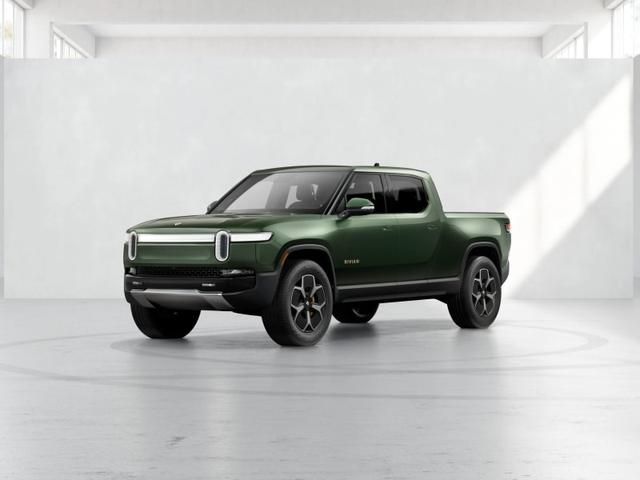2019 TOYOTA 86VIN: JF1ZNAE19K9702144
Historical Records
Damage to rear
| Year | 2019 |
| ODO | 800 mi |
| Seller | Hidden text (Hidden text) |
| MSRP | $2500 |
| Location | Fremont, CA, 94538 |
| Date | appeared 4 years ago latest price $4828 sale post disappeared 2020-06-24 |
| Sale Website Type | classifieds |
| Notes | |
| 8843 | |
| Body Style | Coupe |
| Color | Raven |
| Color (Interior) | Red |
| Transmission | 6-Speed Manual |
| Engine | 2.0L H4 16V PDI DOHC |
| Drive | RWD |
| Fuel Type | Gasoline |
- Hidden text
- Automatic Temperature Control
- Hidden text
- Four Wheel Independent Suspension
- Hidden text
- ABS Brakes
- Hidden text
- Driver Door Bin
- Hidden text
- Front Fog Lights
- Hidden text
- Delay-Off Headlights
- Hidden text
- Front Dual Zone A/C
- Hidden text
- Outside temperature display
- Hidden text
- AM/FM Radio
- Hidden text
- Dual Front Impact Airbags
- Hidden text
- Heated Door Mirrors
- Hidden text
- Passenger Door Bin
- Hidden text
- Security System
- Hidden text
- Air Conditioning
- Hidden text
- Panic alarm
- Hidden text
- Leather seat material
- Hidden text
- Power Steering
- Hidden text
- Spoiler
- Hidden text
- Remote Keyless Entry
- Hidden text
- Rear Window Defroster
- Hidden text
- Voltmeter
- Hidden text
- Variably Intermittent Wipers
- Hidden text
- Front Bucket Seats
- Hidden text
- Occupant Sensing Airbag
- Hidden text
- Rear Bumper Applique,4-Wheel Disc Brakes
- Hidden text
- Tilt steering wheel
- Anti-Theft Alarm System
- Hidden text
- Audio controls on steering wheel
- Hidden text
- Cruise controls on steering wheel
- Hidden text
- Fold forward seatback rear seats
- Hidden text
- Heated driver mirror
- Hidden text
- Automatic front air conditioning
- Hidden text
- Manufacturer's 0-60mph acceleration time (seconds): 6.5 s
- Hidden text
- Rear bench
- Hidden text
- Coil front spring
- Hidden text
- Cruise control,4-wheel ABS Brakes
- Hidden text
- Driver And Passenger Heated-Cushion
- Hidden text
- Front fog/driving lights
- Hidden text
- External temperature display
- Hidden text
- Front reading lights
- Hidden text
- Headlights off auto delay
- Hidden text
- Interior air filtration
- Hidden text
- AM/FM/HD Radio
- Hidden text
- Power remote driver mirror adjustment
- Hidden text
- Self-leveling headlights
- Hidden text
- Trip Computer
- Hidden text
- Electric Power Steering
- Hidden text
- Fuel Consumption: Highway: 28 mpg
- Hidden text
- Leather/metal-look door trim
- Hidden text
- Power Windows
- Hidden text
- Speed Sensitive Audio Volume Control
- Hidden text
- Wheel Diameter: 17
- Hidden text
- Instrumentation: Low fuel level
- Hidden text
- Passenger Airbag
- Hidden text
- Remote power door locks
- Hidden text
- Total Number of Speakers: 8
- Hidden text
- Cargo area light
- Hidden text
- Dusk sensing headlights
- Hidden text
- Fuel Consumption: City: 21 mpg
- Hidden text
- Leather/aluminum shift knob trim
- Hidden text
- Power remote trunk release
- Hidden text
- Simulated suede dash trim
- Hidden text
- Video Monitor Location: Front
Model Analytics & Market Report
Depreciation
| Year | Average Mileage | Average Price | % Left | % Lost | ||
|---|---|---|---|---|---|---|
| 2019 MSRP | 0 mi | $30,093 | — | — | 100% | 0% |
| 2023 | 38,465 mi | $25,998 | +$0 | +0% | 86.39% | 13.61% |
| → Visit 2019 TOYOTA 86 depreciation page to see full data. | ||||||
Price vs Mileage
| Mileage | Average Price | Sample Size |
|---|---|---|
| 0 mi | $29,990 | 364 sales |
| 5,000 mi | $28,300 | 1,390 sales |
| 10,000 mi | $29,698 | 659 sales |
| 15,000 mi | $29,499 | 1,014 sales |
| 20,000 mi | $29,398 | 627 sales |
| 25,000 mi | $28,160 | 492 sales |
| → Visit 2019 TOYOTA 86 depreciation page to see full data. | ||
VIN Decoder — 50 records
Anti-lock Braking System (ABS) means a portion of a service brake system that automatically controls the degree of rotational wheel slip during braking by: (1) Sensing the rate of angular rotation of the wheels; (2) Transmitting signals regarding the rate of wheel angular rotation to one or more controlling devices that interpret those signals and generate responsive controlling output signals; and (3) Transmitting those controlling signals to one or more modulator devices that adjust brake actuating forces in response to those signals.
An auto-reverse system enables power windows and sunroofs on motor vehicles to automatically reverse direction when such power windows and panels detect an obstruction. This feature can prevent children and others from being trapped, injured, or killed by the power windows and sunroofs.
ESC is a computerized technology that improves a vehicle's stability by detecting and reducing loss of traction (skidding). When ESC detects loss of steering control, it automatically applies the brakes to help steer the vehicle in the driver's intended direction. Braking is automatically applied to wheels individually, such as the outer front wheel to counter oversteer, or the inner rear wheel to counter understeer. Some ESC systems also reduce engine power until control is regained.
A TPMS is an electronic system designed to monitor the air pressure inside the pneumatic tires on various types of vehicles. TPMS can be divided into two different types - direct and indirect. Direct TPMS employ pressure sensors on each wheel, either internal or external. The sensors physically measure the tire pressure in each tire and report it to the vehicle's instrument cluster or a corresponding monitor. Indirect TPMS does not use physical pressure sensors but measure air pressures by monitoring individual wheel rotational speeds and other signals available outside of the tire itself.
When the traction control computer detects a driven wheel or wheels spinning significantly faster than another, it invokes an electronic control unit to apply brake friction to wheels spinning due to loss of traction. This braking action on slipping wheels will cause power transfer to the wheels with traction due to the mechanical action within the differential.
A backup camera, also known as a rearview video system, helps prevent back-over crashes and protects our most vulnerable people - children and senior citizens - by providing an image of the area behind the vehicle. A backup camera helps the driver see behind the vehicle while in reverse.
DRL is an automotive lighting system on the front of a vehicle or bicycle, that automatically switches on when the vehicle is in drive, and emits white, yellow, or amber light to increase the conspicuity of the vehicle during daylight conditions.
A semi-automatic headlamp beam switching device provides automatic or manual control of beam switching at the option of the driver. When the control is automatic, the headlamps switch from the upper beam to the lower beam when illuminated by the headlamps on an approaching car and switch back to the upper beam when the road ahead is dark. When the control is manual, the driver may obtain either beam manually regardless of the condition of lights ahead of the vehicle.
Engine displacement (in cubic centimeters) is the volume swept by all the pistons inside the cylinders of a reciprocating engine in a single movement from top dead center to bottom dead center.
Engine displacement (in cubic inches) is the volume swept by all the pistons inside the cylinders of a reciprocating engine in a single movement from top dead center to bottom dead center.
Engine displacement (in liters) is the volume swept by all the pistons inside the cylinders of a reciprocating engine in a single movement from top dead center to bottom dead center.
Engine brake is the horsepower (hp) at the engine output shaft. Engine Brake (hp) From is the lower value of the range.
Engine brake is the horsepower (hp) at the engine output shaft. Engine Brake (hp) To is the upper value of the range.
This is a numerical field to store the number of cylinders in an engine. Common values for passenger cars are 4 or 6.
Body Class presents the body type based on 49 CFR 565.12(b): "Body type means the general configuration or shape of a vehicle distinguished by such characteristics as the number of doors or windows, cargo-carrying features and the roofline (e.g., sedan, fastback, hatchback)." Definitions are not provided for individual body types in the regulation.
Gross vehicle weight rating (GVWR) is the maximum operating weight of a vehicle including the vehicle's chassis, body, engine, engine fluids, fuel, accessories, driver, passengers and cargo, but excluding that of the trailers. Per 49 CFR 565.15, Class 1 is further broken down to Class A-D; Class 2 is further broken down to Class E-H. This field captures the lower bound of GVWR range for the vehicle.
Gross vehicle weight rating (GVWR) is the maximum operating weight of a vehicle including the vehicle's chassis, body, engine, engine fluids, fuel, accessories, driver, passengers and cargo, but excluding that of the trailers. Per 49 CFR 565.15, Class 1 is further broken down to Class A-D; Class 2 is further broken down to Class E-H. This field captures the higher bound of GVWR range for the vehicle.
Per 49 CFR 565, Model means a name that a manufacturer applies to a family of vehicles of the same type, make, line, series and body type.
If the model year (MY) is supplied when the VIN is decoded, such as from a crash report or a vehicle registration record, the MY value will be the supplied MY, even if the MY decoded from the VIN differs from the supplied MY. If the MY is not supplied when the VIN is decoded, the MY value will be decoded from the 10th character in the VIN.
Note is used to store any additional information that does not correspond to any of the specified fields on the interface. This is a catch-all element for systems other than for engine, restraint system, brake and battery. Engine, restraint system, brake, and battery have their own note elements.
This data element captures the city of the manufacturing plant where the manufacturer affixes the VIN.
This data element captures the name of the company that owns the manufacturing plant where the manufacturer affixes the VIN.
This data element captures the country of the manufacturing plant where the manufacturer affixes the VIN.
This data element captures the State or Province name within the Plant Country of the manufacturing plant where the manufacturer affixes the VIN.
This field captures the location of curtain air bags. Curtain air bags are side air bags that protect the head.


































